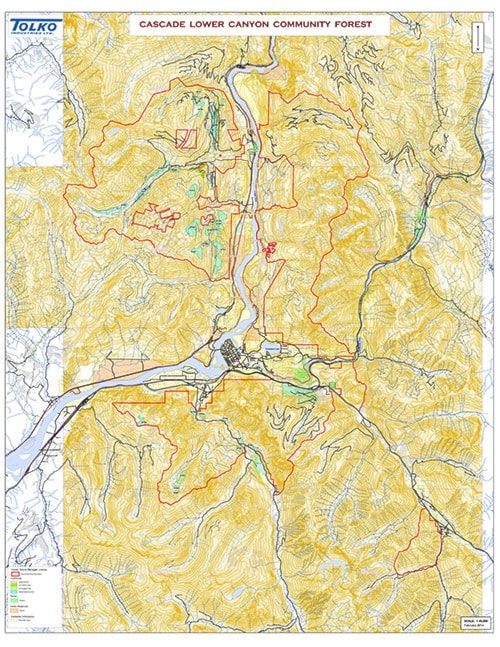A new education initiative is underway to create community awareness about forest ecology and forestry management.
The Cascade Lower Canyon Community Forest (CLCCF) is hosting a Discovery Night at the Blue Moose on May 27, followed by a summer community forest walk in three of the forest locations (Hope, Yale and Sunshine Valley).
The Discovery Night starts at 6:30 p.m., with a presentation by Brian Taylor, board member of the CLCCF, at 7 p.m.
High school presentations for Grade 11 biology students about forest ecology and forestry practices are also slated for the summer.
Although a community forest initiative is relatively new to the area, it is not new to British Columbia. The B.C. Ministry of Forests, Land and Natural Resources have released more than 50 community managed forests in B.C. alone since 1998 under the Forest Act.
The CLCCF started the application process for a community forest license back in 2002. The lease was secured in December 2011, with the first logging occurring near Emory Creek late last year. The organization is made up of three partners: Yale First Nations, District of Hope and Fraser Valley Regional District. They form a not-for-profit organization which has secured a 25-year (renewable) lease for the purpose of a community forest. The tenure runs from Flood (10 km west of Hope) to Yale (26 km east of Hope) on both sides of the Fraser River. This same land was previously forestry tenure, logged by private companies.
A community forest is different to usual forest tenure whereby the forest is managed by the community for the benefit of the community. The community is considered a stakeholder and as such has input into the management of the forest. The board encourages conversation with the community because their role is to represent residents. Some people have indicated areas they wish to conserve, others are interested in the recreational purposes such as the creation of trails. The forest provides long-term community economic development, local employment, improves incentives to consider long-term benefits of sustainable management, protection of drinkable watersheds, landscapes and views and other values that are important to our community.
Aside from local employment, all of the profit goes back into the community by way of community grants. As logging began last year, some of the first grants were awarded.
Hope Mountain Centre received a grant to provide the high school education program, and Hope Mountain Black Bear Committee received funding for their education programs as well as the GOGRIZZ phone line which provides important data to the ministry and public.
For more information about the community forest, visit www.clccf.ca.
